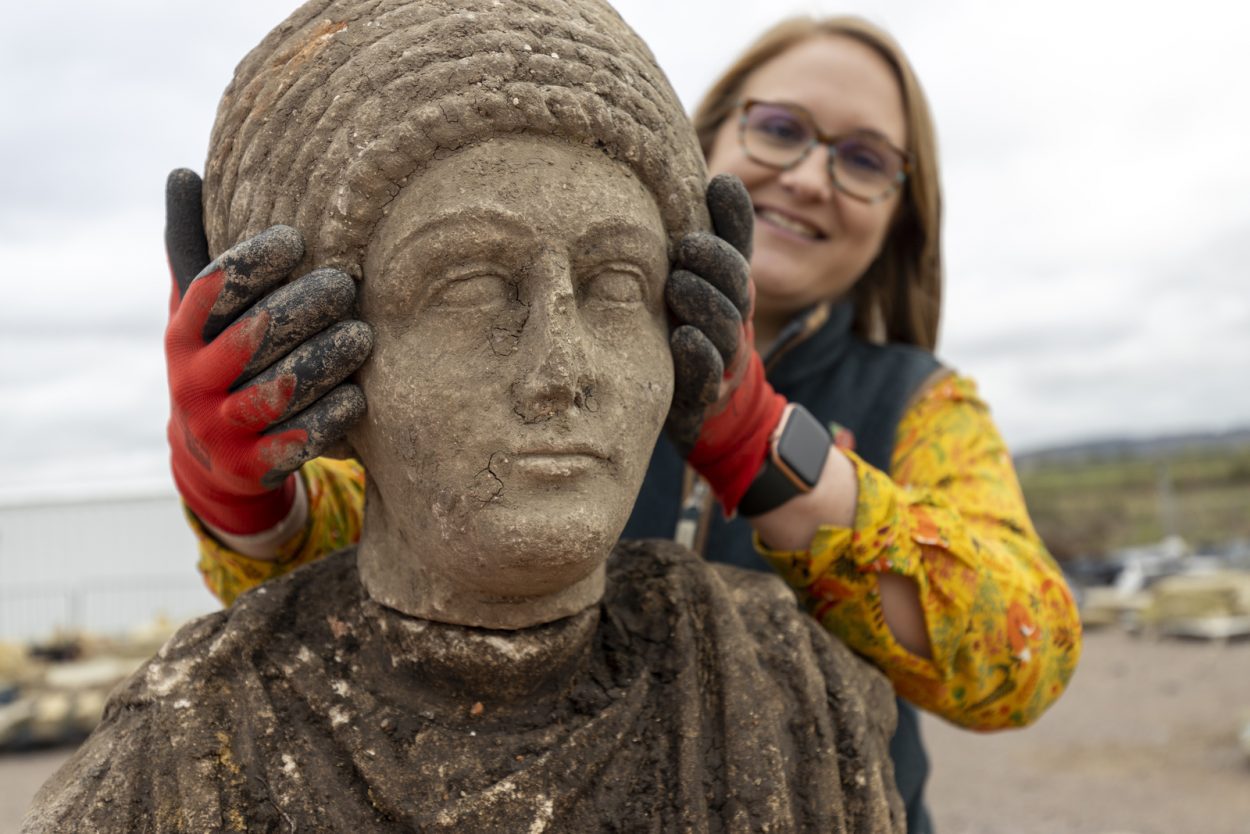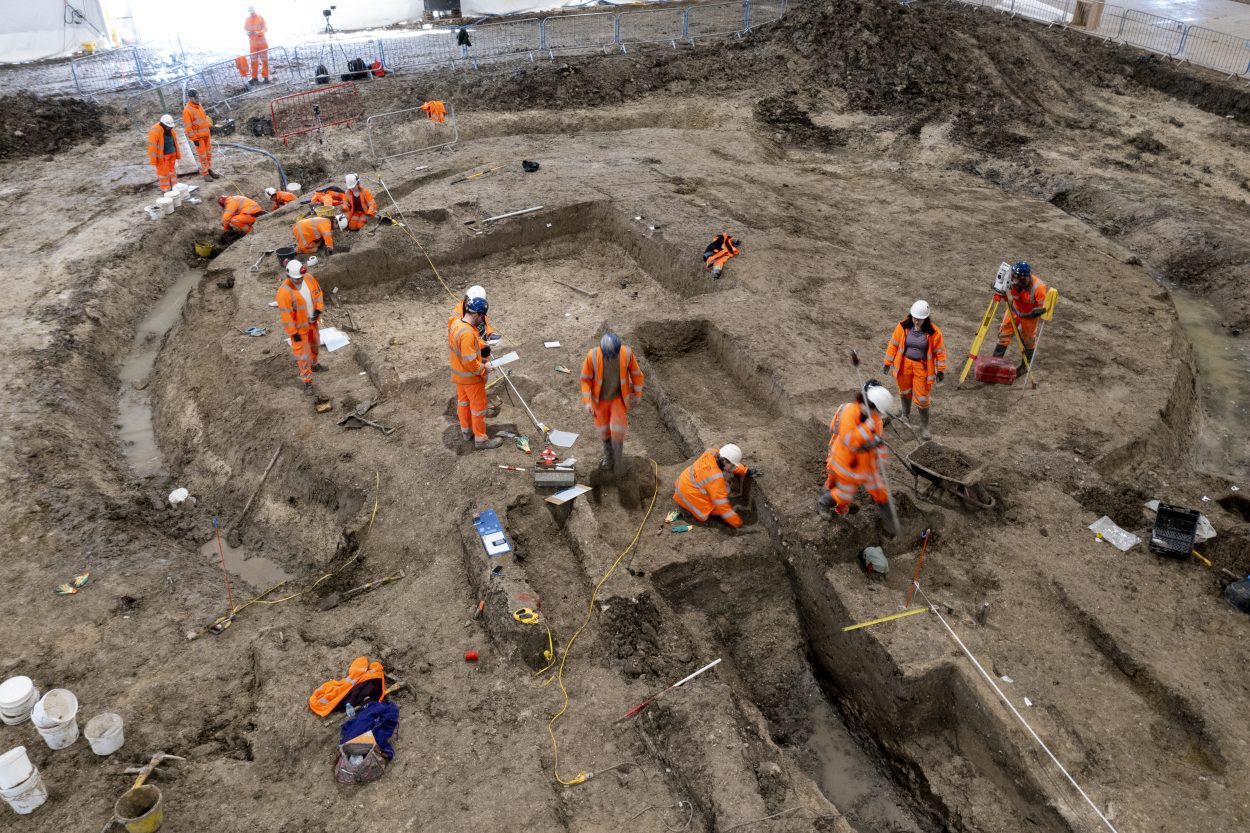A team of archaeologists has uncovered a rare collection of Roman busts whilst excavating a Norman church in Stoke Mandeville, Buckinghamshire, England.
Excavations were conducted by Fusion JV and L-P archaeology as part of a HS2 funded project, where the researchers found three stone Roman busts whilst excavating a circular ditch around what was thought to be the foundations of an Anglo-Saxon tower.
Two of the busts consists of a head and torso depicting a female adult and male child, whilst the other is just the stone head of an additional child.
Archaeologists also found numerous Roman roof tiles, painted wall plaster, cremation urns, and a well-preserved hexagonal glass Roman jug, for which the only comparable example is a glass vessel on display in the Metropolitan Museum of Art, New York.

Dr Rachel Wood, Lead Archaeologist for Fusion JV, said: “For us to end the dig with these utterly astounding finds is beyond exciting. The statues are exceptionally well preserved, and you really get an impression of the people they depict – literally looking into the faces of the past is a unique experience. Of course, it leads us to wonder what else might be buried beneath England’s medieval village churches. This has truly been a once in a lifetime site and we are all looking forward to hearing what more the specialists can tell us about these incredible statues and the history of the site before the construction of the Norman church.”

Archaeologists now believe the square building that pre-dates the Norman church is a Roman mausoleum. Roman materials found in the ditch around are too ornate and not enough in number to suggest the site was a domestic building.
The Roman building appears to have been finally demolished by the Normans when building St Mary’s church, after possible reuse during the Saxon period. The walls and demolition rubble of the Roman building are directly beneath the Norman foundations with no soil build up in between. Saxon pottery was also found in a cut of the ditch, as well as a Saxon coin. Further analysis of the data is being undertaken and the team hope to confirm this hypothesis.





